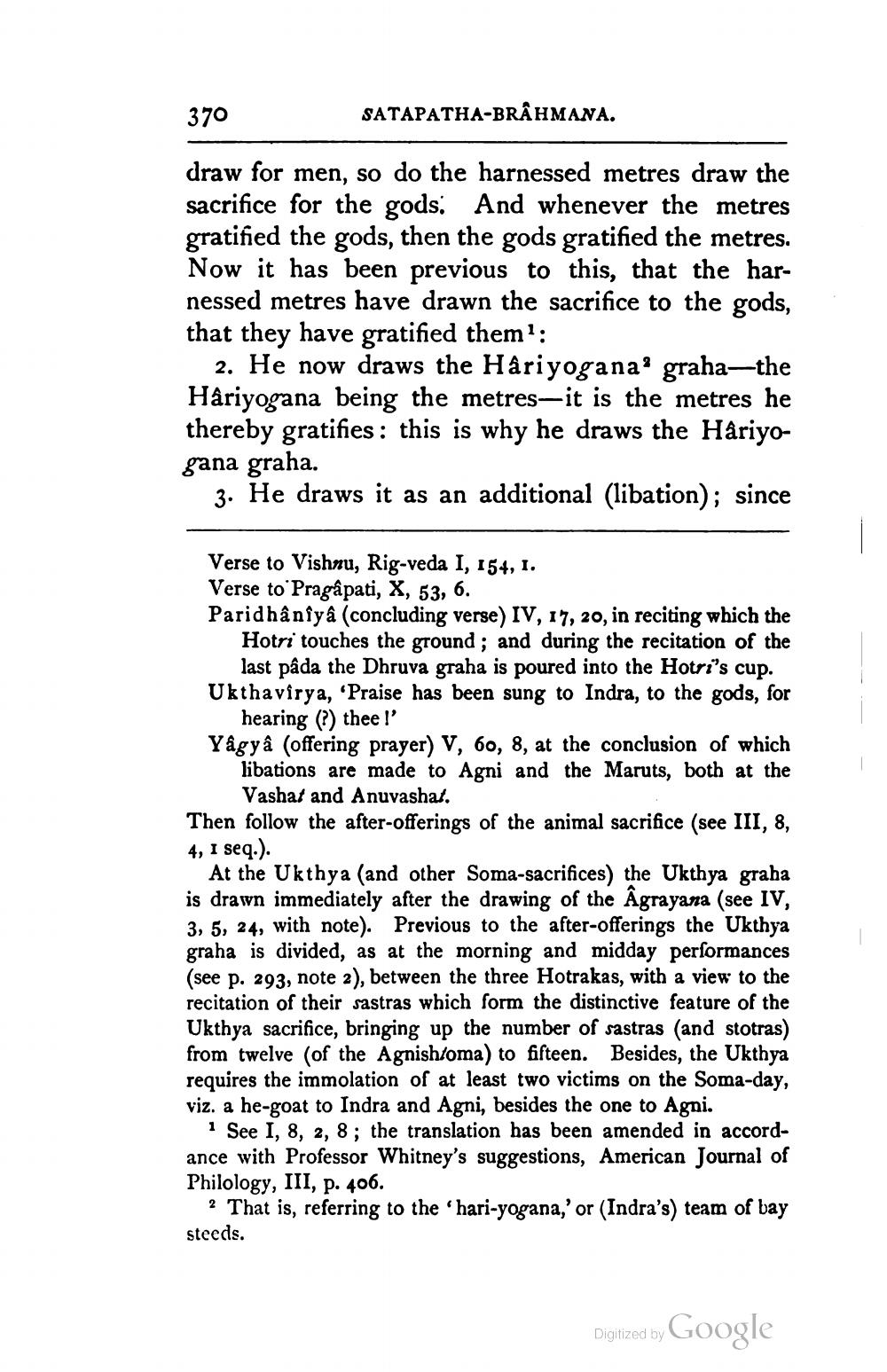________________
370
SATAPATHA-BRAHMANA.
draw for men, so do the harnessed metres draw the sacrifice for the gods. And whenever the metres gratified the gods, then the gods gratified the metres. Now it has been previous to this, that the harnessed metres have drawn the sacrifice to the gods, that they have gratified them?:
2. He now draws the Hâriyogana: graha-the Hariyogana being the metres-it is the metres he thereby gratifies: this is why he draws the Hâriyogana graha.
3. He draws it as an additional (libation); since
Verse to Vishnu, Rig-veda I, 154, I. Verse to Pragâpati, X, 53, 6. Paridhânîyâ (concluding verse) IV, 17, 20, in reciting which the
Hotri touches the ground; and during the recitation of the
last pâda the Dhruva graha is poured into the Hotri's cup. Ukthavirya, 'Praise has been sung to Indra, to the gods, for
hearing (?) thee !' Yâgyâ (offering prayer) V, 60, 8, at the conclusion of which
libations are made to Agni and the Maruts, both at the
Vashat and Anuvashat. Then follow the after-offerings of the animal sacrifice (see III, 8, 4, I seq.).
At the Ukthya (and other Soma-sacrifices) the Ukthya graha is drawn immediately after the drawing of the Agrayana (see IV, 3, 5, 24, with note). Previous to the after-offerings the Ukthya graha is divided, as at the morning and midday performances (see p. 293, note 2), between the three Hotrakas, with a view to the recitation of their sastras which form the distinctive feature of the Ukthya sacrifice, bringing up the number of sastras (and stotras) from twelve (of the Agnishtoma) to fifteen. Besides, the Ukthya requires the immolation of at least two victims on the Soma-day, viz. a he-goat to Indra and Agni, besides the one to Agni.
1 See I, 8, 2, 8; the translation has been amended in accordance with Professor Whitney's suggestions, American Journal of Philology, III, p. 406.
? That is, referring to the 'hari-yogana,' or (Indra's) team of bay steeds.
Digitized by Google




